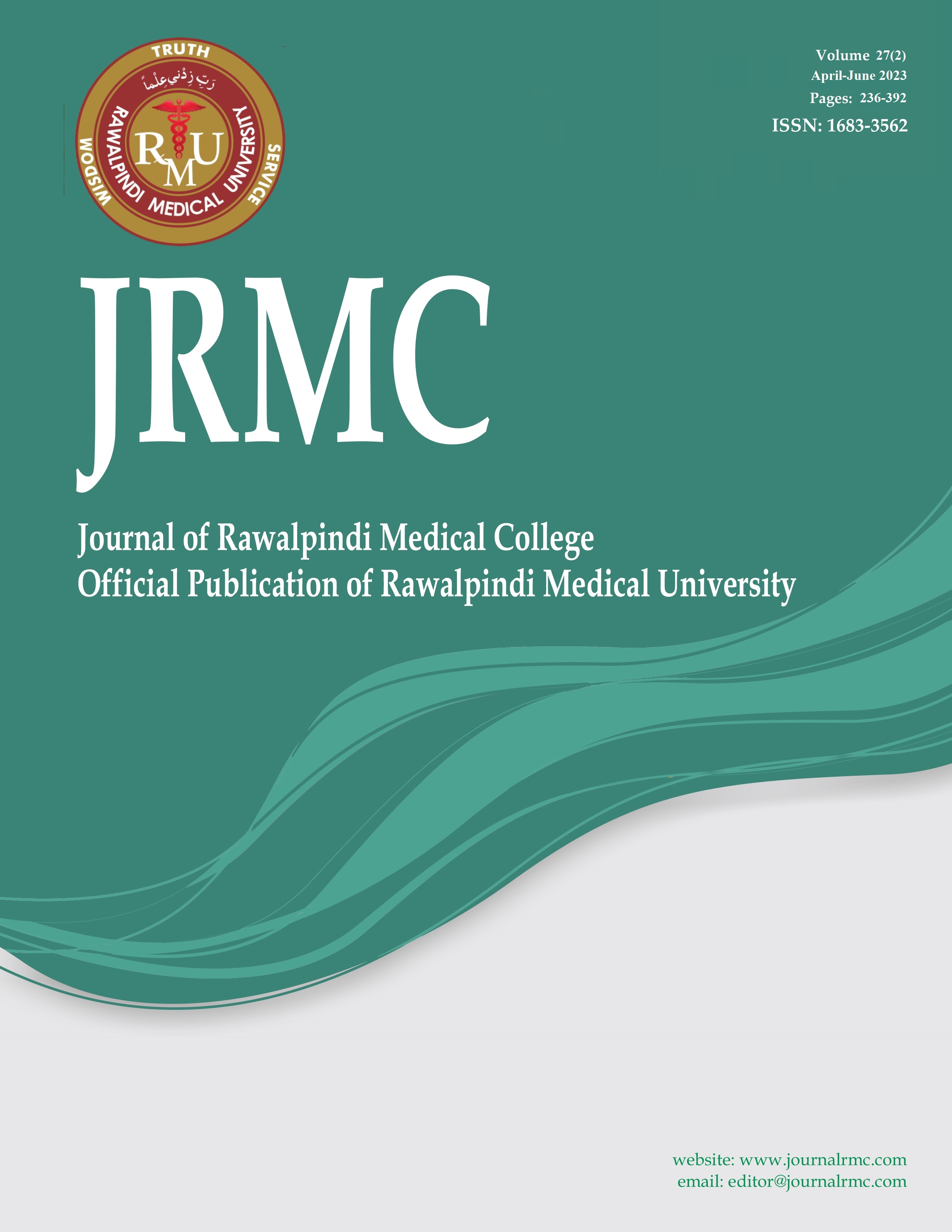Abstract
Objective: This study was carried out in resource-restricted settings receiving patients predominantly from middle- or lower-income classes, to highlight the indications, outcomes, and multiple factors affecting the outcome of mechanical ventilation in neonates.
Materials and Methods: A retrospective study was conducted in level 3 NICU. Neonates ventilated from January 2018 to July 2021 were included in this study. Primary disease as an indication of ventilation along with outcomes in comparison to various parameters (clinical and laboratory) was listed as predictors of mortality. Thrombocytopenia was defined as platelet count<150,000/ μl and thrombocytopenia present was recorded as positive and negative for normal platelet count. C Reactive Protein levels of > 6 mg/dl were taken as positive.
Results: A total of 320 ventilated neonates were included in the study. Among them 65.6% were males and 41.3% survived. Respiratory distress syndrome (RDS ) (28.7%), Hypoxic Ischaemic Encephalopathy (HIE) (26.6%), and Neonatal sepsis (NNS) (14.1%) were the three most indications for ventilation. The disease-specific outcome shows mortality was 64.4% in NNS, 64% in RDS, and 56.4% in HIE. Out of the total enrolled babies for the study, 62.1% were received outdoors and 37.8 % were indoors 74.4% of babies with HIE were received outdoors. Low birth weight, prematurity, mode of admission, first CRP at the time of presentation, thrombocytopenia, and duration of ventilation were portending factors of mortality
Conclusion: Prematurity associated with RDS, HIE and NNS were the major indications for ventilation. Outdoor babies have poor survival due to late referrals and late presentations. Thrombocytopenia and early sepsis were found to be bad prognostic factors.
References
Chakkarapani AA, Adappa R, Mohammad Ali SK, Gupta S, Soni NB, Chicoine L, et al. “Current concepts of mechanical ventilation in neonates” – Part 1: Basics. International Journal of Pediatrics & Adolescent Medicine [Internet]. 2020 Mar 1;7(1):13–8. Available from: https://www.ncbi.nlm.nih.gov/pmc/articles/PMC7193068/
Jahan N, Haque ZS, Mannan MA, Nasrin M, Afroz F, Parvez A, et al. Indication and short-term outcome of Mechanical Ventilation in Neonates in a tertiary care hospital. Bangladesh Journal of Medical Science. 2017 Jan 16;16(1):24–8. https://doi.org/10.3329/bjms.v16i1.31128
Richardson DK, Gray JE, Gortmaker SL, Goldmann DA, Pursley DM, McCormick MC. Declining Severity Adjusted Mortality: Evidence of Improving Neonatal Intensive Care. Pediatrics [Internet]. 1998 Oct 1 [cited 2021 Feb 28];102(4):893–9. Available from: https://pediatrics.aappublications.org/content/102/4/893.short
St. John EB, Carlo WA. Respiratory distress syndrome in VLBW infants: changes in management and outcomes observed by the NICHD neonatal research network. Seminars in Perinatology. 2003 Aug;27(4):288–92.https://doi.org/10.1016/S0146-0005(03)00056-9
Dutt RD, Dutt C, Ambey R. Neonatal Mechanical Ventilation-Early Experiences in central India. International Journal of Medical Research and Review. 2014 Aug 31;2(4):319–23.https://doi.org/10.17511/IJMRR.2014.I04.10
WHO. Newborn Mortality [Internet]. www.who.int. 2022. Available from: https://www.who.int/news-room/fact-sheets/detail/levels-and-trends-in-child-mortality-report-2021
Neonatal mortality [Internet]. UNICEF DATA. Available from: https://data.unicef.org/topic/child-survival/neonatal-mortality.
Bhutta ZA, Hafeez A, Rizvi A, Ali N, Khan A, Ahmad F, et al. Reproductive, maternal, newborn, and child health in Pakistan: challenges and opportunities. The Lancet. 2013 Jun;381(9884):2207–18. DOI: 10.1016/S0140-6736(12)61999-0.
Khemani S, Shamim N, Mirza A et al. Referral pattern and outcomes of neonates from secondary care setting of aga khan university hospital to tertiary care centers in Pakistan. Journal of the Pakistan Medical Association. 2021 Feb 23;1–13.https://doi.org/10.47391/JPMA.1259
Mazhar A, Rehman A, Sheikh MA, Naeem MM, Qaisar I, Mazhar M. Neonates--a neglected paediatric age group. J Pak Med Assoc. 2011 Jul;61(7):625-8. PMID: 22204232.
Pakistan Demographic and Health Survey 2006-07 [Internet]. Available from: https://dhsprogram.com/pubs/pdf/FR200/FR200.pdf
Ancora G, Maranella E, Grandi S, Pierantoni L, Guglielmi M, Faldella G. Role of bilevel positive airway pressure in the management of preterm newborns who have received surfactant. Acta Paediatrica. 2010 Jun 10;99(12):1807–11.https://doi.org/10.1111/j.1651-2227.2010.01910.x
Mufti P, Setna F, Nazir K. Early neonatal mortality: effects of interventions on survival of low birth babies weighing 1000-2000g. J Pak Med Assoc. 2006 Apr;56(4):174-6. PMID: 16711339.
Khushdil A, Waqar T, Ahmed Z. Outcome of neonates ventilated in NICU of a tertiary care hospital and factors associated with poor outcome. Pakistan Armed Forces Medical Journal [Internet]. 2018 Apr 30 ;68(2):300–4. Available from: https://pafmj.org/index.php/PAFMJ/article/view/1345
Iqbal J, Ahmed A, Iqbal Q, Younus M, Ahmad I, Charoo B, et al. Neonatal mechanical ventilation: Indications and outcome. Indian Journal of Critical Care Medicine. 2015;19(9):523–7.doi: 10.4103/0972-5229.164800.
Mokhtar, W. A., Sherief, L., M. Kamal, N., Kamel, S. Mortality Rate in Mechanically Ventilated Neonates: A Developing Country Experience. Iranian Journal of Neonatology IJN, 2021; 12(2): 1-7.doi: 10.22038/ijn.2021.33734.1488
Ehtizaz L, Haider S, Fayyaz M, Ansar A, Nazir S, Rafique S. Neonatal sepsis and resistance pattern of isolates in Tertiary level neonatal unit: Time to evaluate the empirical antibiotics selection. Journal of Rawalpindi Medical College. 2021 Jun 30;25(2):264–9.https://doi.org/10.37939/jrmc.v25i2.1605
Haider S, Nazir S, Sehar K, Saleem M. Mortality associated with Isolated Pathogens in Neonatal Sepsis at Izzat Ali Shah Hospital, Wah Cantt. Med Forum 2018;29(9):36-39.
Salahuddin A, Jan A, Zahid SB, Aleem M. To share our experience of invasive ventilation in NICU at Rehman Medical Institute, Peshawar-Pakistan. Med Forum Monthly 2018 July. 29(7):40-43
Lawn JE, Cousens S, Zupan J. 4 million neonatal deaths: When? Where? Why? The Lancet. 2005 Mar;365(9462):891–900.doi: 10.1016/S0140-6736(05)71048-5.
Mirlashari J, Qommi R, Nariman S, Bahrani N, Begjani J. Clinical Competence and Its Related Factors of Nurses in Neonatal Intensive Care Units. Journal of Caring Sciences [Internet]. 2016 Dec 1;5(4):317–24. Available from: http://europepmc.org/articles/PMC5187552/. https://doi.org/10.15171/jcs.2016.033.
Watson SI, Arulampalam W, Petrou S, Marlow N, Morgan AS, Draper E, et al. The effects of a one-to-one nurse-to-patient ratio on the mortality rate in neonatal intensive care: a retrospective, longitudinal, population-based study. Archives of Disease in Childhood - Fetal and Neonatal Edition. 2016 Feb 9;101(3):F195–200. doi10.1136/archdischild-2015-309435

This work is licensed under a Creative Commons Attribution-ShareAlike 4.0 International License.

